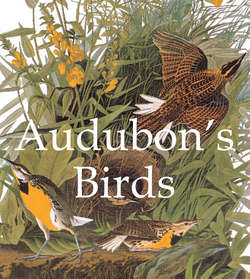Читать книгу Audubon's Birds - John James Audubon - Страница 7
На сайте Литреса книга снята с продажи.
Family III
Striginæ. Owls
ОглавлениеBill very short, strong, cerate; upper mandible with the tip elongated and decurved; lower mandible with the end rounded and thin edged. Head extremely large, owing to the wide separation of the tables of the cranium, rounded, more or less vertically flattened behind, feathered. Eyes excessively large, with prominent superciliary ridges, and encircled by series of decomposed feathers.
Great horned Owl
Bubo virginianus
Plate 61
Owls
External aperture of ear always very large, frequently excessive, simple or operculate. Tarsus short, very short, or of moderate length, always feathered, as are the toes, of which the outer is versatile, the first shorter than the second, the anterior free; claws very long slender, curved, extremely acute. Plumage very full and soft. Wings long, broad, rounded, the second, third, and fourth quills longest, the filaments of the outer more or less enlarged and recurved at the end.
Great Grey Owl
Strix nebulosa
Plate 351
Owls
Tail broad, rather short or of moderate length, of twelve feathers. Oesophagus very wide, without crop or dilatation; stomach very large, round, membranous, its muscular fasciculi placed in a single series; intestine short and wide. Young at first covered with light coloured down, when fledged, with the face darker than that of adults. Eggs: white, somewhat globular or broadly ovate, from four to six. Nests rudely constructed, in hollow trees, on branches, in buildings, or on the ground.
Common-Barn-Owl
Tyto alba
Plate 171
Owls
